During the 2014 IATEFL conference last week, a few people noticed me doodling away in a notebook (with real pen and paper!) during talks. Several people were even so kind as to ask to take photos of my notes, compliment them, and share them with our friends on Facebook. I’ll be sharing my notes on this blog as I finish coloring them (yes, like a 5-year old!), but since so many people seemed interested in the process of visual note-taking, here are a few resources and tips if you too want to start doodling rather than typing or writing your notes. It’s done as a sort of FAQs, based on questions I got during the conference.
What are sketchnotes?
Basically a visual form of note-taking that combines drawings, lettering styles, colors, icons, dividers, arrows, and whatever else you want to put into them to make your notes pretty and relevant to the content you want to capture.
Do you have to be a good artist to sketchnote?
Nope. I’m certainly not, unless you count stick figures, cubes, and the cat I learned to draw when I was 8 (and have been drawing that way ever since). That’s not modesty, it’s honesty. When I did do lots of artsy stuff in high school, I did collages. Why? Because you don’t have to draw, you just have to cut and paste. You don’t have to be an artist to create sketchnotes. In fact, the fact that the drawings are just sketches adds a certain graphic appeal. The whole minimalist design thing seems pretty trendy at the moment, so maybe that’s why. But you certainly don’t need to be an artist or even a good drawer to do sketchnotes! Just start doodling and keep at it!
How long does it take to learn how to sketchnote?
That’s like asking “How long does it take to learn English?” The answer depends on what proficiency level you’re aiming for. Before the IATEFL conference, I had done sketchnotes for 2 talks and 3 webinars. Not exactly years of experience then. Which means that it doesn’t take tons of training. You just have to start and keep at it. Of course, the notes you create will probably become more fluid, better organized, and more concentrated in key info as you get more experience, but there’s not better way to get experience than to just practice, practice, practice! (Hint: try sketchnoting the videos of all those IATEFL talks you missed but that are now available online. And there’s no stress of someone watching you create your notes!)
How do you draw and write and listen at the same time?
This does take a bit of practice, and I’m certainly still working on it! In my notebook there are several spots that are just blank and that will be filled after I get the speaker’s slides, read other people’s blog posts about the talk, etc. Presentations often contain some spots of intense info and some spots of down time (or “talk to your neighbor” time). You can use these to complete your notes, add little embellishes, or sketch a quick figure that can be fleshed out in more detail later. This has the added advantage of encouraging you to go back to your notes after the talk because you really want to fill them in, so you make that extra bit of effort. Again, storing things in your short-term memory while writing, drawing, and listening is a skill that improves with practice, but we’re all teachers, so don’t we enjoy a bit of mental work?
Why bother?
Sketchnotes are just prettier than scrawls of text that never get looked at again! But on a deeper level, there seem to be some cognitive benefits:
- Trying to find images to illustrate the message helps you connect with and process the words.
- Non-linear note-taking means you can arrange concepts on the page in a way that makes sense to you. You can also easily draw connectors to show relationships between similar or contrasting ideas.
- You may be more artsy-fartsy than you think. Most people stop drawing because they think they’re not “good at it”. You don’t have to be good at drawing to sketchnote, but it does help to master a few basic shapes and ways of combining them to make simple images.
- People (especially yourself) will want to read and re-read your notes. This means you review them more often and the stuff sticks better than if it just rotted away in a notebook (or computer file) somewhere.
- The mind-body connection, or embodied cognition comes into play, since you are physically creating representations of the ideas you are processing. Scott Thornbury wrote a great article on this, published in the TESOL France Teaching Times in 2013.
How can I learn more about sketchnotes and how to do them?
There are lots of resources out there!
The first resource I’d recommend is the book The Sketchnote Handbook by Mike Rohde. There’s a Kindle version, but I personally prefer the paper version. It’s just nice flipping through the pages!
Sketchnoting has also carved out some cyberspace for itself. Here are a few resources you’ll likely find useful:
Not sure what’s with all violent metaphors, but it makes me think of this endless Soviet-style army marching forth wielding a pen in one hand and a notebook in the other!
Hope that answers some of the questions that you may have had about sketchnoting as a way to record your conference experience! If not, feel free to add other questions in the comments below! And keep your eyes out for the posts of the sketchnotes that I made–they’ll be posted here as I finish them!

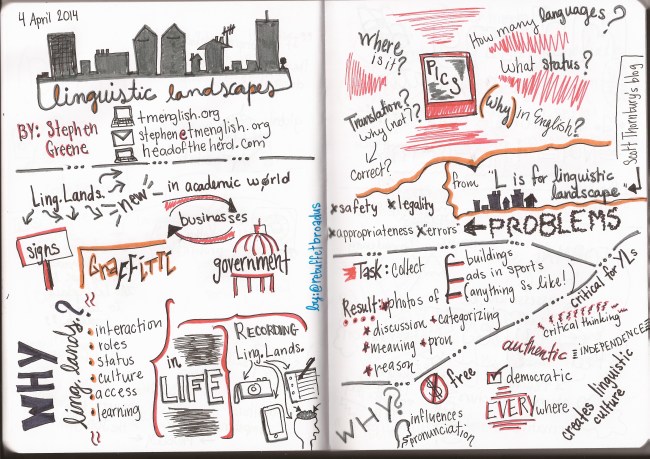
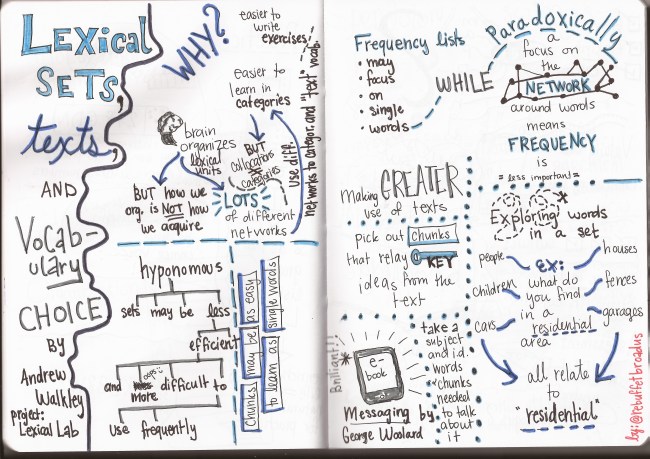

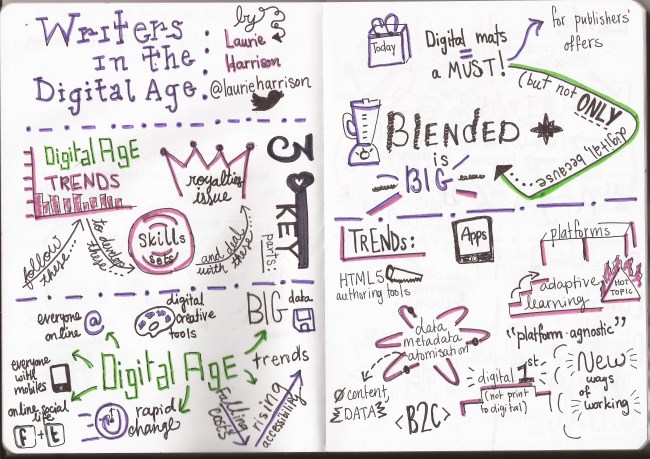
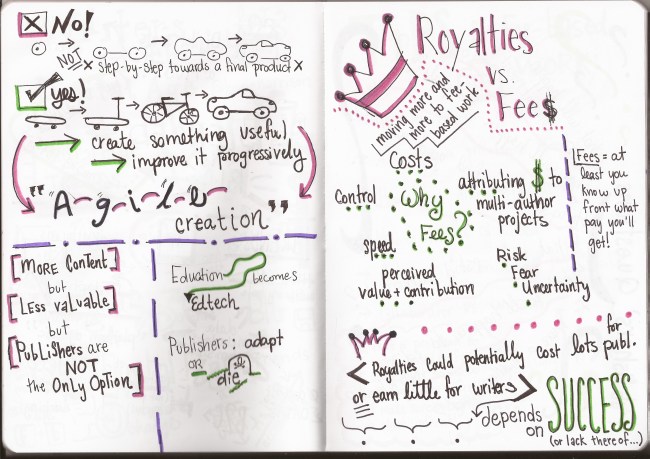


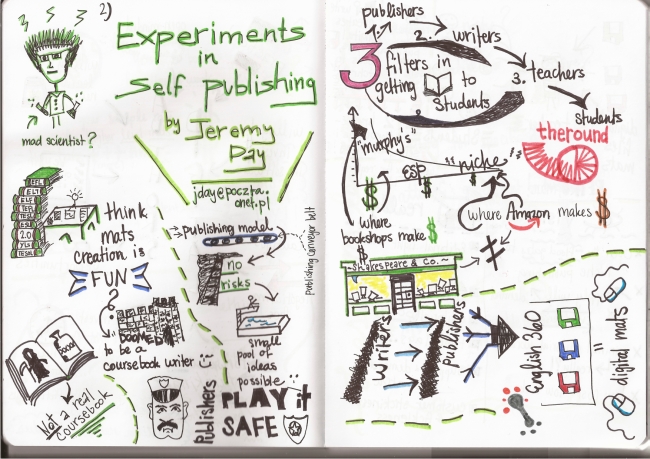


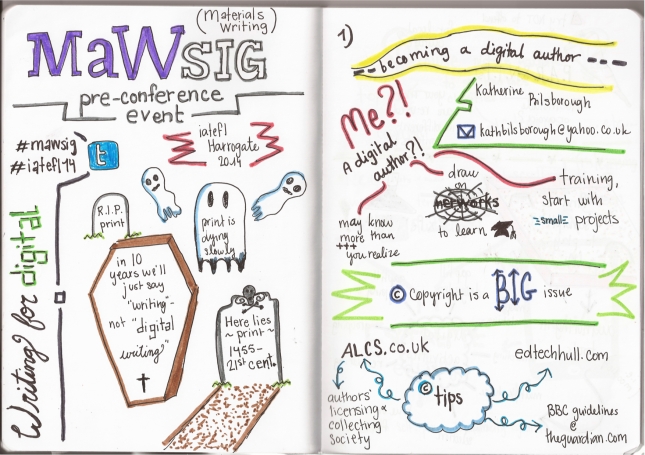


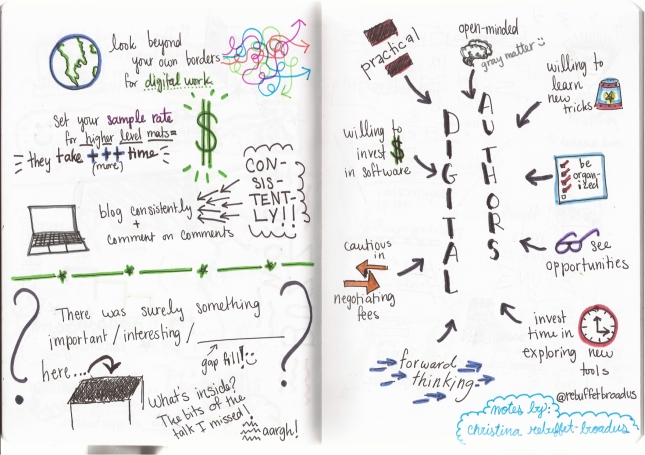

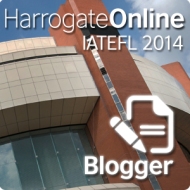

11 learning tips from 11 terrific teachers at the 2014 IATEFL Hungary conference
Last week I had the honor of attending and presenting at the 24th annual IATEFL Hungary conference in Veszprém. One of the many excellent talks I attended was Mark Andrews’ “The Danube, the Bridges of Budapest, and Making the Familiar Strange.” Mark made some great points about getting students out of the classroom and into the real world to cultivate their curiosity and develop their English. In other words, to create bridges between the world around them and their own inner growth.
With this idea of building bridges in mind, some of my kind colleague-friends offered to share their own advice for learning English with my trainees in the video below.
Although my trainees all live in France and mainly only see me for their English training, I thought this would be a neat opportunity to create a virtual bridge between some wonderful teachers from different countries and my trainees in France.
Feel free to share these tips with your own students and to continue building bridges. And why not share the link back to this blog with your own colleagues, wherever they may be.
Want to get updates from the iLoveTEFL blog as new articles are published? You can subscribe by simply leaving your name and email address.
Posted by Christina Rebuffet-Broadus on October 12, 2014 in Conference commentary, Random reflections
Tags: associations, conference commentary, teaching tips